Montmartre!
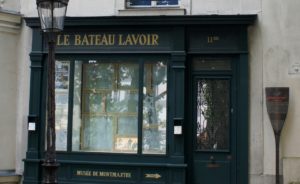
Le Bateau Lavoir 2016. Burned down in 1970. The window tells its history
Montmartre! After teaching art history for over 30 years and reciting the tale of Picasso creating Cubism with Braque at the Bateau Lavoir, I had no idea really of exactly where it was or the great significance of Montmartre historically as a place of revolutionary ideas, as an independent enclave in Paris, and as a site of intersection for the avant- garde starting as early as the impressionists and lasting until World War I. All his life Picasso looked back on his years in Montmartre as the best of his life. His connection to the musicians, poets, singers, dancers, as well as its radical political history, profoundly shaped him. It was easier to break rules in Montmartre.
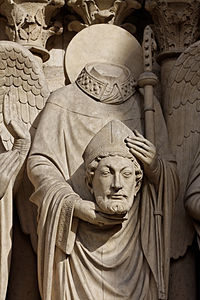
Its earliest story is the reason for its name, Mount of Martyrs, St Denis was martyred there, and of course the story is that after decapitation he picked up his head and walked away preaching all the way. He is the patron saint of Paris. ( That’s him on Notre Dame with his head).
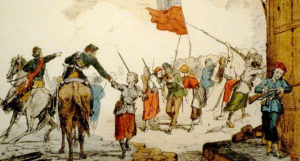
And even before the artists arrived in the late 19th century, Montmartre has a thrilling history as one of the centers of the Paris Commune of 1871. Again I always knew about Courbet advocating and helping to pull down the column in the Place Vendome of Napoleon I, but he was also part of the Commune in Montmartre along with many other vivid personalities such as the Red Virgin, Louise Michel , an ardent revolutionary. Women played a major part in the commune as active warriors. After the fall of the commune Michel was exiled, but after the amnesty for the radicals in 1889 she came back to France and continued to be a radical and activist.
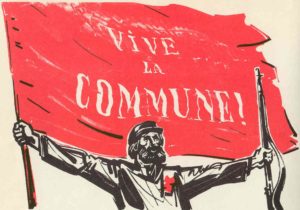
The commune was brief, from 18 March to 28 May 1871 but of monumental importance in the history of radicalism: During those few weeks, the communards abolished the death penalty, and military conscription, for starters, then rights of workers, free secular education, equal pay for men and women, separation of church and state, requisition of empty houses for homeless, citizen status for foreign inhabitants. All great ideas that we still need today! The communards inspired Marx and Engels as an example of the dictatorship of the proletariat, and it was an inspiration for the Russian Revolution.
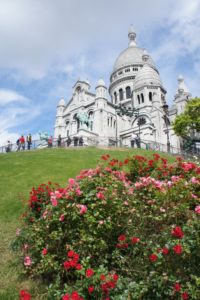
Right after the commune, the Catholics began the huge Sacre Coeur, an obvious way of physically squashing the rebellious history of Montmartre with this gigantic building. It was completed in 1914, exactly the year that Picasso and the avant-garde left Montmartre. It was no longer the radical village they had come to, it was now an outpost of the city and its oppresions. Yet even today
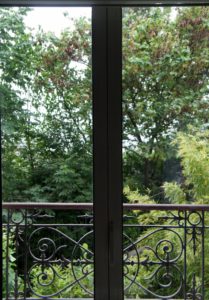
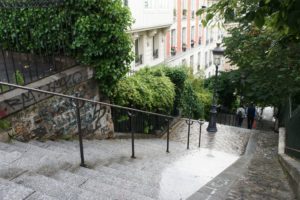
Montmartre still feels like an isolated enclave with a different character than the rest of Paris. When we descended the butte to go the Grand Palais, I was overwhelmed with the heavy Second Empire architecture.
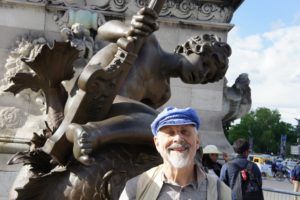
Henry serenaded by a second empire musician
Montmartre has miraculously retained its atmosphere (although now the homes are those of the wealthy), but the streets look like those of Utrillo’s paintings.
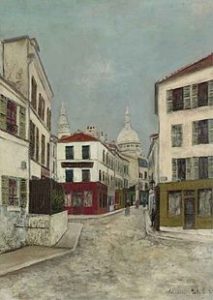
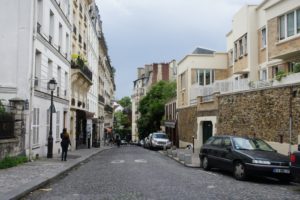
The steep streets prevent most cars from using them, the sand colored buildings, the paving stones, and of course “Le Moulin de La Galette,” the only surviving windmill from the 16th to the late 19th when there were 30 windmills that ground the wheat of the farms there.
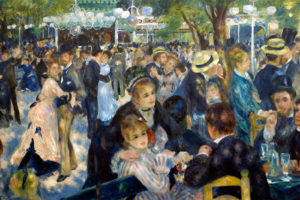
“Le Moulin de la Galette”, so familiar to us from Renoir’s painting is a later name for a now decorative windmill, named for a homemade brown bread.
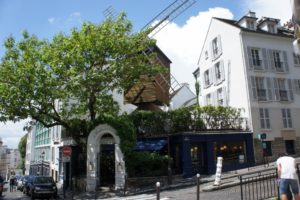
The restaurant has just reopened this spring, but of course it is an ultra chic place now, not the public garden seen in Renoir’s wonderful painting. The artists used to gather here for outdoor dancing every Sunday, but that large space is now gone.
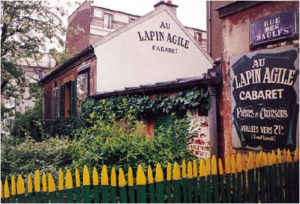
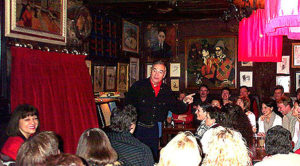
There were poets, musicians, writers, painters, sculptors, dancers, singers, all friends, all going to cabarets together. We went to Au Lapin Agile, still there, still the same atmosphere of intimacy with the singers, of all ages ever since 1860!. Wonderful dark interior and we were given a cherry liqueur as we listened to poetry, humour and revolutionary workers songs. The singers encouraged us to sing along as they walked among our tables.
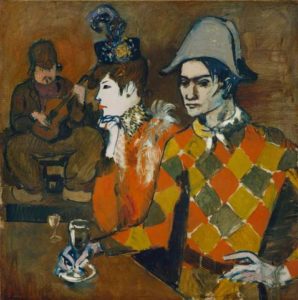
The Lapin Agile still encourages young singers as well as supporting older singers. On the walls were an eclectic mix of different paintings, sculptures ( Buddha, Christ ). One of the singers spoke of Apollinaire and Picasso, among others, who enjoyed the music and poetry there. I could almost feel them still sitting there. One of Picasso’s paintings of patrons in the Lapin Agile used to hang there.
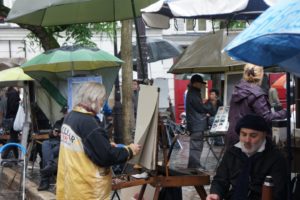
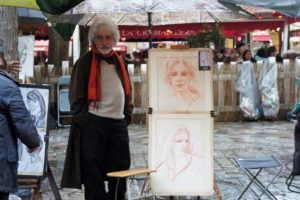
In the Place du Tertre, handsome painters offer to paint our portrait. Some of them were quite good!
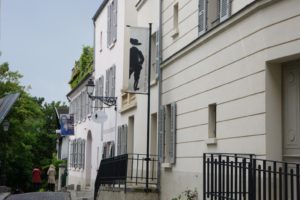
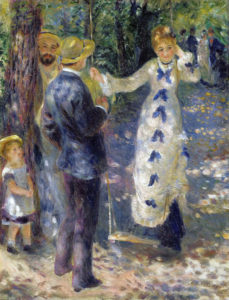
The Musee de Montmartre including the garden where Renoir painted the Swing, displayed historical images of Montmartre, of the commune and the martrydom of St Denis, and a recent exhibition “Artistes a Montmartre from Steinlen to Satie 1870 – 1910” which emphasized the role of artists like the radical protestor of injustice, Steinlen, Toulouse Lautrec, and Degas who encouraged Suzanne Valadon to become an artist.
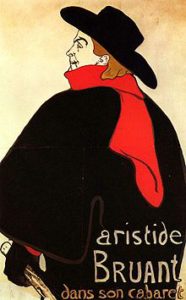
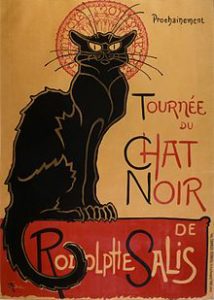
Perhaps most significant was Aristide Bruant, singer of the famous cabaret Chat Noir ( famous logo of cat with a Byzantine halo) who created the “chanson realiste” style that we heard “Au Lapin Agile.” The singers at Au Lapin Agile all wore black with red accents matching the Toulouse Lautrec painting of Bruant.
(and note the painter in the square also wore that color scheme)
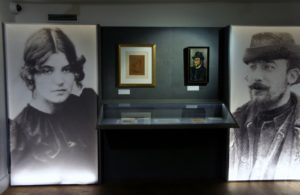
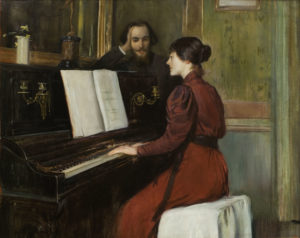
Santiago Rusinol of Satie admiring Valadon on the piano
The highlight of the exhibition was the love affair of Eric Satie and Suzanne Valadon in 1892. Satie’s music was playing as we looked at some of his love letters to her, as well as her painting of him as a young man, before his suave identity as the ultimate Bohemian had formed. Satie wished to capture in music the instant seen in the impressionist painting, as well as connect to the real world.
Kupka, Bonnard, Bernard, Dufy and others who are less famous, but equally provocative all lived in Montmartre. Van Gogh was not in the exhibition, but he too lived in Montmartre. We saw a studio that belonged to Valadon and later artists, as well as Utrillo’s bedroom (Utrillo is Valadon’s son).
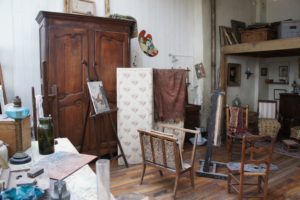
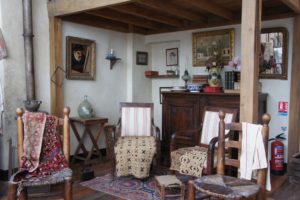
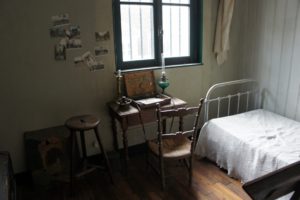
At the beginning of the 20th century, Picasso arrived in Montmartre and he began to publish images ala Toulouse Lautrec in a small newspaper there. 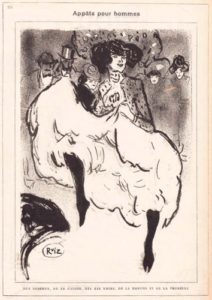
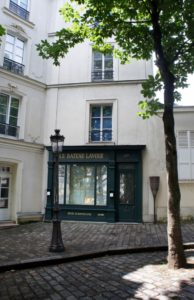
The famous Bateau Lavoir was home to many painters, musicians, and poets, and the scene or Picasso’s famous banquet for Douanier Le Rousseau, the artist who inspired the other artists with his “primitive” style.
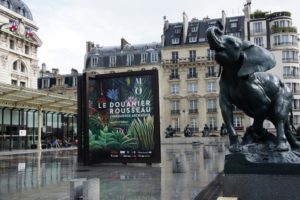
We were fortunate that while we were in Paris there was a major exhibition of the Douanier Rousseau as well as Apollinaire. Rousseau’s well known paintings still thrill me with their direct color, design and subjects.
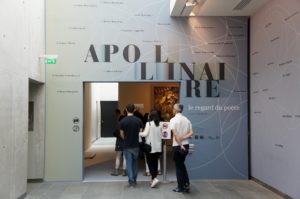
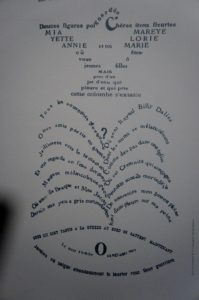
Apollinaire is the experimental poet, and art critic, who wrote some of the first analysis of Braque and identified the Cubists as a group. When he died of influenza in 1918, an era ended for the avant-garde in Paris.
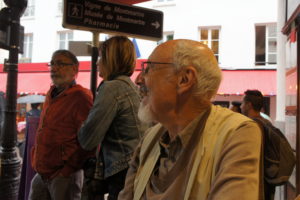
Henry at a Montmartre Cafe
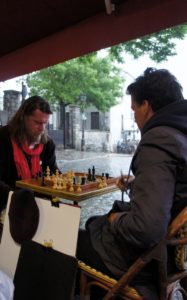
chess players (note that red and black theme again)
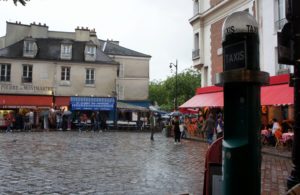
rainy afternoon in Montmartre
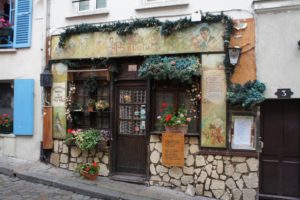
The scenic Cafe Poulenc








